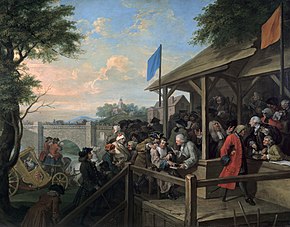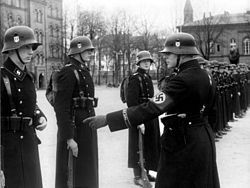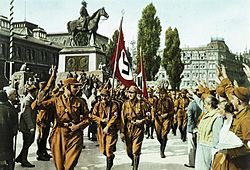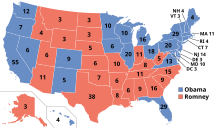
A flag is a piece of fabric with a distinctive design and colours. It is used as a symbol, a signalling device, or for decoration. The term flag is also used to refer to the graphic design employed, and flags have evolved into a general tool for rudimentary signalling and identification, especially in environments where communication is challenging. Many flags fall into groups of similar designs called flag families. The study of flags is known as "vexillology" from the Latin vexillum, meaning "flag" or "banner".

Purple is a color similar in appearance to violet light. In the RYB color model historically used in the arts, purple is a secondary color created by combining red and blue pigments. In the CMYK color model used in modern printing, purple is made by combining magenta pigment with either cyan pigment, black pigment, or both. In the RGB color model used in computer and television screens, purple is created by mixing red and blue light in order to create colors that appear similar to violet light.

Magenta is a purplish-red color. On color wheels of the RGB (additive) and CMY (subtractive) color models, it is located precisely midway between violet and red. It is one of the four colors of ink used in color printing by an inkjet printer, along with yellow, cyan, and black to make all the other colors. The tone of magenta used in printing, printer's magenta, is redder than the magenta of the RGB (additive) model, the former being closer to rose.

The national flag of Germany is a tricolour consisting of three equal horizontal bands displaying the national colours of Germany: black, red, and gold. The flag was first sighted in 1848 in the German Confederation. The flag was also used by the German Empire from 1848 to 1849. It was officially adopted as the national flag of the German Reich from 1919 to 1933, and has been in use since its reintroduction in Federal Republic of Germany in 1949.

A rainbow flag is a multicolored flag consisting of the colors of the rainbow. The designs differ, but many of the colors are based on the seven spectral colors of the visible light spectrum.

Orange is the colour between yellow and red on the spectrum of visible light. Human eyes perceive orange when observing light with a dominant wavelength between roughly 585 and 620 nanometres. In traditional colour theory, it is a secondary colour of pigments, produced by mixing yellow and red. In the RGB colour model, it is a tertiary colour. It is named after the fruit of the same name.

The flag of Portugal is the national flag of the Portuguese Republic. It is a rectangular bicolour with a field divided into green on the hoist, and red on the fly. The lesser version of the national coat of arms of Portugal is centered over the colour boundary at equal distance from the upper and lower edges. Its presentation was done on 1 December 1910, after the downfall of the constitutional monarchy on 5 October 1910. However, it was only on 30 June 1911, that the official decree approving this flag as the official flag was published. This new national flag for the First Portuguese Republic, was selected by a special commission whose members included Columbano Bordalo Pinheiro, João Chagas and Abel Botelho. The conjugation of the new field color, especially the use of green, was not traditional in the Portuguese national flag's composition and represented a radical republican-inspired change that broke the bond with the former monarchical flag. Since a failed republican insurrection on 31 January 1891, red and green had been established as the colours of the Portuguese Republican Party and its associated movements, whose political prominence kept growing until it reached a culmination period following the Republican revolution of 5 October 1910. In the ensuing decades, these colours were popularly propagandised as representing the hope of the nation (green) and the blood of those who died defending it (red), to endow them with a more patriotic and dignified, therefore less political, sentiment.

The national flag of Mauritius, also known as the Four Bands and Les Quatre Bandes, was adopted upon independence, 12 March 1968. It consists of four horizontal bands of equal width, coloured red, blue, yellow, and green. The flag was recorded at the College of Arms in London on 9 January 1968.

There are two flags in official use in the Serbian Autonomous Province of Vojvodina, the Flag of Vojvodina and the Traditional flag of Vojvodina. Two flags are given the equal status in the Provincial Assembly Decision on the Appearance and Usage of Symbols and Traditional Symbols of AP Vojvodina adopted in 2016.
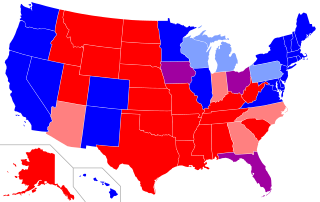
Starting with the 2000 United States presidential election, the terms "red state" and "blue state" have referred to U.S. states whose voters vote predominantly for one party — the Republican Party in red states and the Democratic Party in blue states — in presidential and other statewide elections. By contrast, states where the vote fluctuates between the Democratic and Republican candidates are known as "swing states" or "purple states". Examining patterns within states reveals that the reversal of the two parties' geographic bases has happened at the state level, but it is more complicated locally, with urban-rural divides associated with many of the largest changes.

In German politics, a traffic light coalition is a coalition government of the Social Democratic Party of Germany (SPD), the Free Democratic Party (FDP) and Alliance 90/The Greens. It is named after the parties' traditional colours, respectively red, yellow, and green, matching the colour sequence of a traffic light (Ampel). The term is also used for similar coalitions between social democrats, liberals and greens in other countries.

Political symbolism is symbolism that is used to represent a political standpoint or party.

The national colours of the Federal Republic of Germany are officially black, red, and gold, defined with the adoption of the West German flag as a tricolour with these colours in 1949. Germany was divided into West Germany and East Germany from 1949 to 1990, and both Germanies retained the black, red, and gold colors on their respective flags. After German reunification in 1990, the united Germany retained the West German flag, thus retaining black, red, and gold as Germany's colors.
Purple is a common term in politics used to describe governments or other political entities consisting of parties that have red and blue as their political colours. It is of particular note in three countries. In the politics of the Netherlands and Belgium, purple is the term for a government coalition of social democrats and liberals, excluding christian democrats. It is derived from the combination of the colour of the social democrats (red) and liberals (blue).

The flag of the Second Spanish Republic, known in Spanish as la tricolor, was the official flag of Spain between 1931 and 1939 and the flag of the Spanish Republican government in exile until 1977. Its present-day use in Spain is associated with the modern republican movement, different trade unions and various left-wing political movements.
Color symbolism in art, literature, and anthropology refers to the use of color as a symbol in various cultures and in storytelling. There is great diversity in the use of colors and their associations between cultures and even within the same culture in different time periods. The same color may have very different associations within the same culture at any time. Diversity in color symbolism occurs because color meanings and symbolism occur on an individual, cultural and universal basis. Color symbolism is also context-dependent and influenced by changes over time. Symbolic representations of religious concepts or articles may include a specific color with which the concept or object is associated.

In politics, a rosette is a fabric decoration worn by political candidates to identify themselves as belonging to a particular party. The rosette, worn on the chest or suit jacket, will show the colour or colours of the political party that the candidate represents. Rosettes are worn by campaigning politicians in the United Kingdom, New Zealand and some other countries.
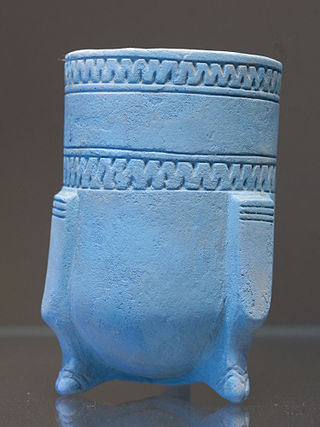
The colour blue has been important in culture, politics, art and fashion since ancient times. Blue was used in ancient Egypt for jewellery and ornament. In the Renaissance, blue pigments were prized for paintings and fine blue and white porcelain. in the Middle Ages, deep rich blues made with cobalt were used in stained glass windows. In the 19th century, the colour was often used for military uniforms and fashion.
